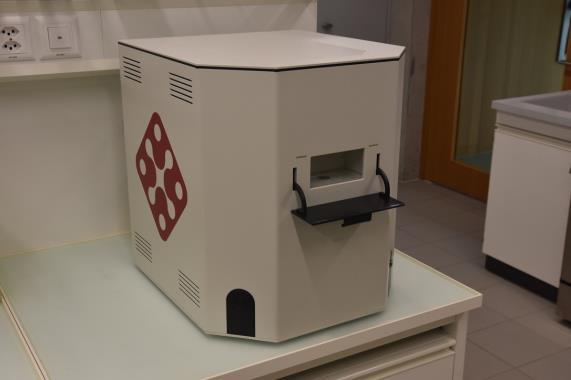Research Report 2021
Institute of Computational Physics
Dynamics of Charge Transfer States in Organic Semiconductor Devices: A Combined Experimental and Simulation-Based Approach (CTDyn) In this Swiss-German collaboration the charge transfer states (CT excitons), that play a crucial role in the understanding and further improvement of the efficiency of organic electronic devices such as OLEDs and organic solar cells, will be investigated. We choose an approach that combines optical and electronic measurements with numerical simulations and will improve the underlying physical models and numerical methods. Contributors: Partner(s): Funding: Duration:
M. Regnat, S. Züfle, B. Ruhstaller Prof. Wolfgang Brütting, Universität Augsburg SNSF / DFG 2020–2023
In this project we study the dynamics of excitons and interplay between different exciton species as well as between excitons and charge carriers, both in the bulk of individual layers (intra-molecular) and at interfaces of multilayer organic semiconductor devices (inter-molecular). We will extend the established 1D drift-diffusion approach [1] and combine it with a novel 3D Master equation model [2] as well as compare it with 0D analytical formulas. Figure 1 shows exciton and charge transfer processes that can occur, in both, organic light-emitting diodes (OLEDs) and organic solar cells.
Figure 2: Excited states lifetime data for increasing current densities of an OLED with an emitter concentration of 2% (left) and 16% (right). Fit to experimental data clearly shows that the decrease at higher currents is better described by TPQ for the case with 2%, and by TTA for the case with 16%.
With the combination of 3D Master equation and 1D drift-diffusion approach it should be possible to set up an electro-optical model that is able to reproduce both cases with one set of parameters and thus allows us to understand the exciton processes in this OLED better. In the end it should be possible to predict the optimum emitter concentration for the highest efficiency and the lowest efficiency roll-off at high current densities.
Figure 1: General exciton and charge transfer processes. FC denotes the free carriers, S1 the singlet, T1 the triplet exciton, and S0 the ground state.
References: [1] Simulation software Setfos, www.fluxim.com/setfos-intro (April 2021) [2] Zeder et al. „Coupled 3D Master Equation and 1D Drift-Diffusion Approach for Advanced OLED Modeling“. Journal of the Society for Information Display 28, Nr. 5 (2020): 440–49. https://doi.org/10.1002/jsid.903
In a first part of this project we are using advanced simulations to better understand the influence of different exciton quenching processes, such as tripletpolaron quenching (TPQ) and triplet-triplet annihilation (TTA), on the efficiency of an OLED device for different emitter concentrations. Figure 2 shows the excited states lifetime τ* data (directly proportional to the efficiency of an OLED) of a green phosphorescent OLED stack with an emitter concentration of 2% and 16%. From fitting of the data with 0D analytical formulas the underlying exciton quenching mechanism for the reduction of the excited states lifetime at increasing current densities is either TPQ or TTA.
Zurich University of Applied Sciences
31
www.zhaw.ch
















